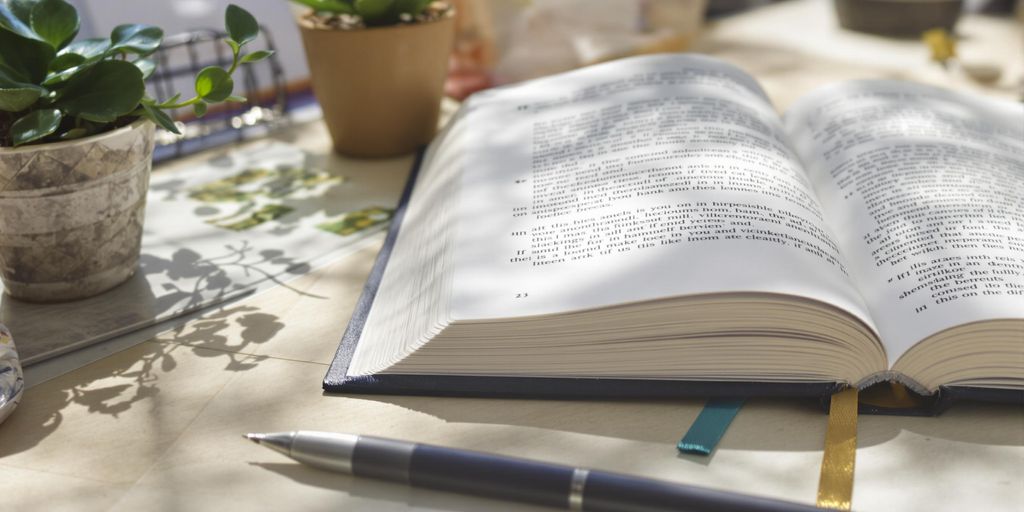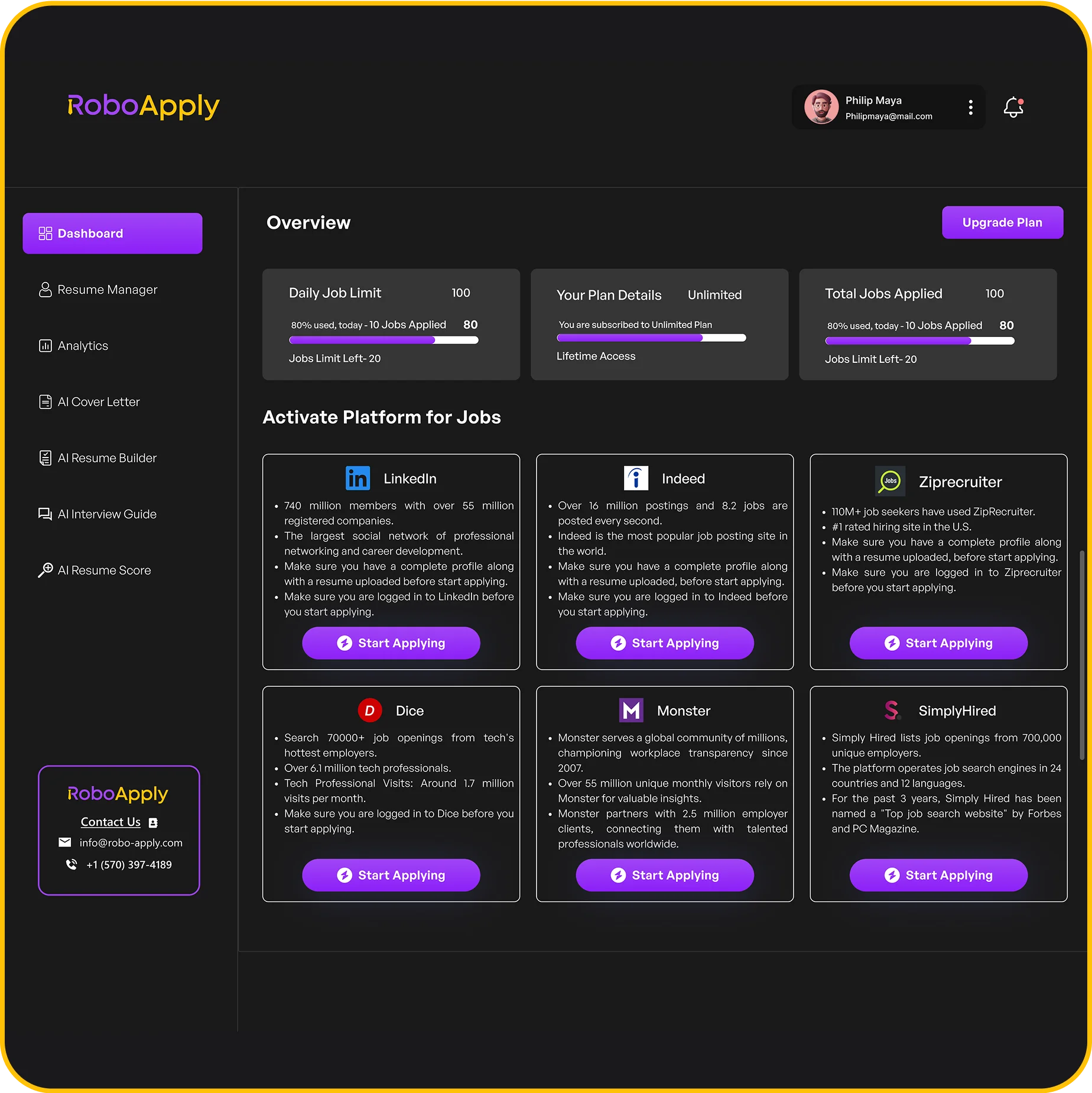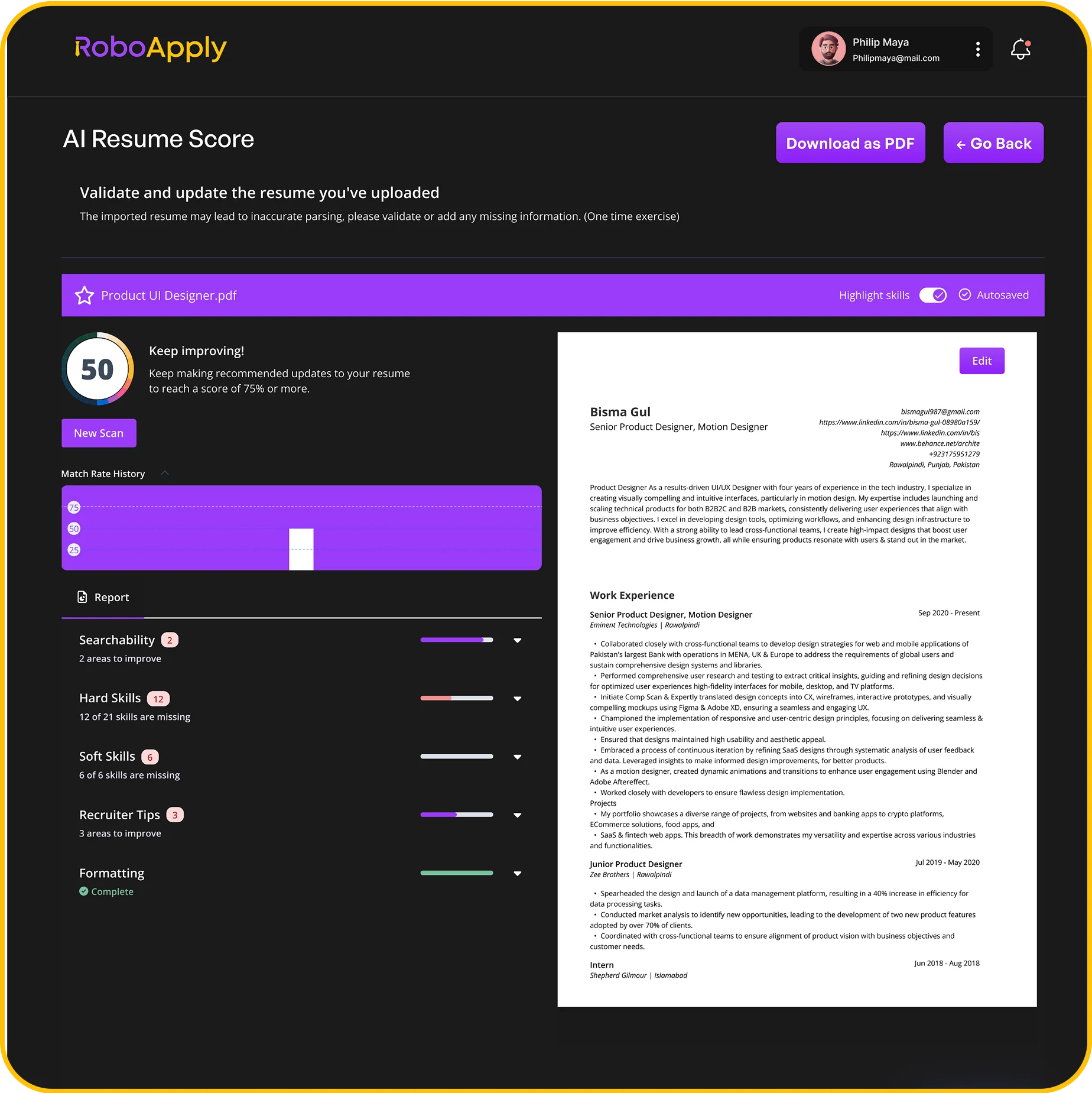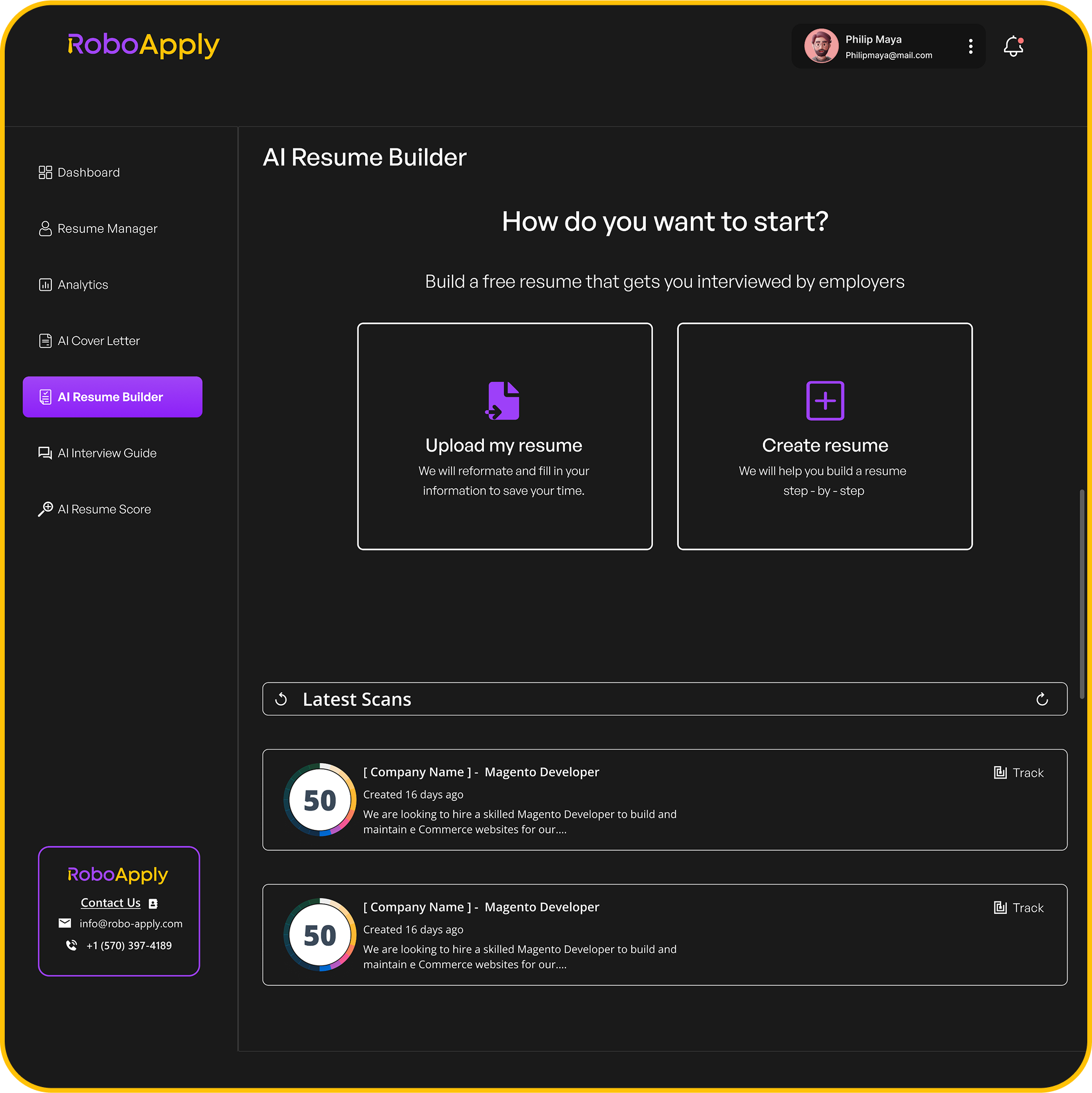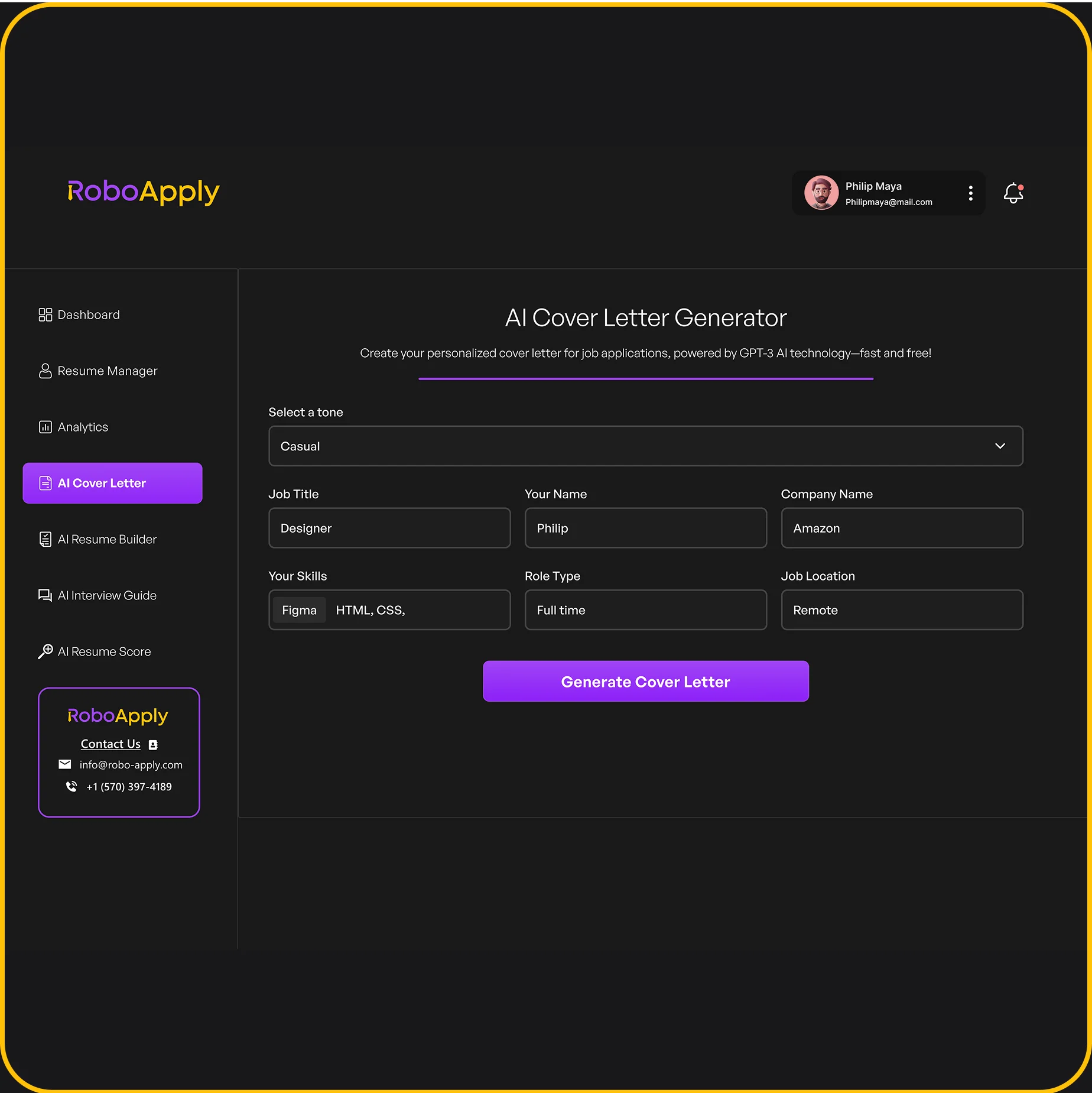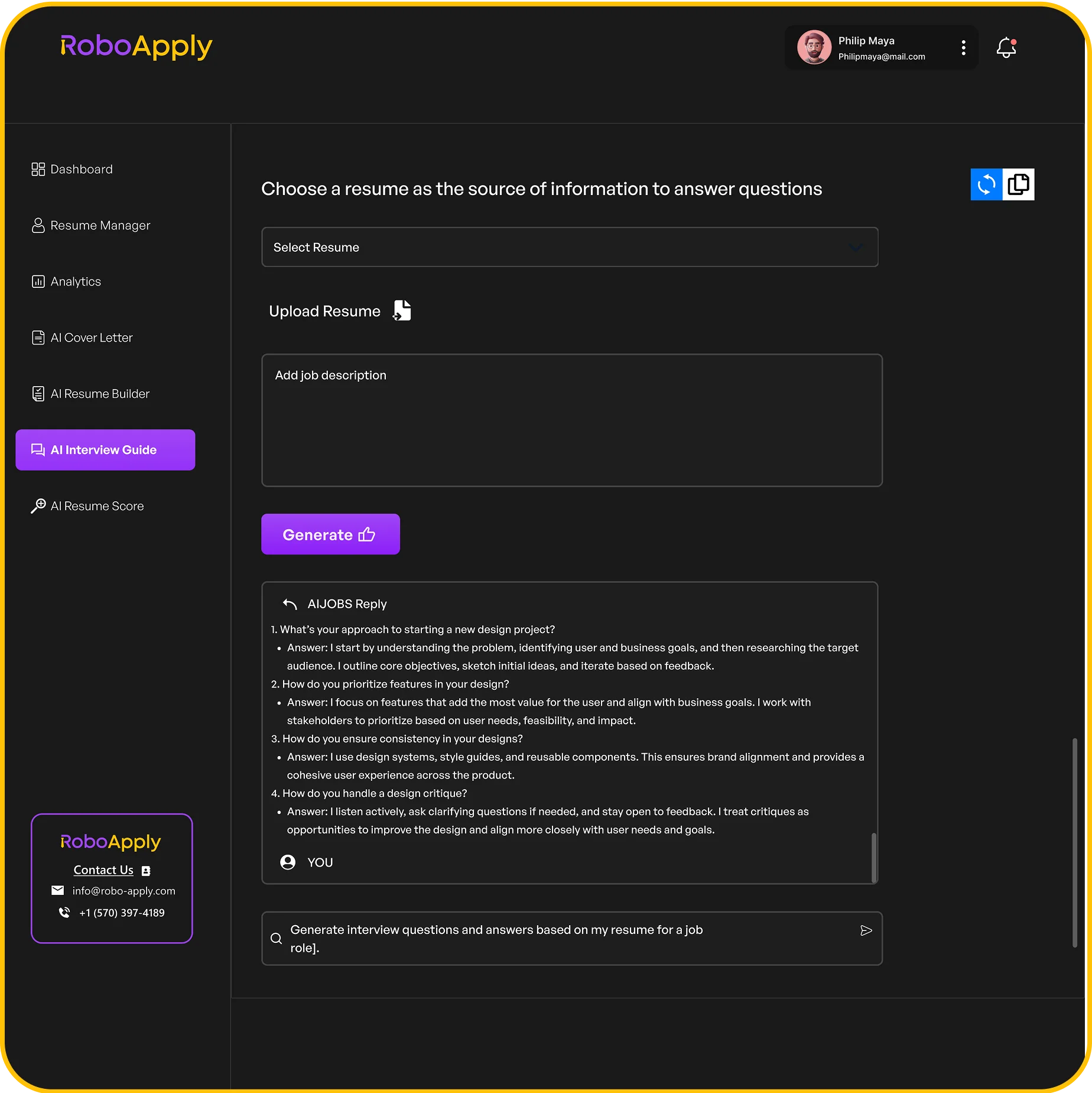1. Dance Resume Sample
Let’s look at what a dance resume might look like. It’s more than just listing your experience; it’s about showing your unique skills and training. A well-crafted resume can really grab the attention of directors and choreographers.
Here’s what you might include:
- Performance experience
- Formal training or education
- Collaboration skills
Consider this example:
Name: Anya Petrova
Phone: (555) 123-4567
Email: anya.petrova@email.com
Summary
Highly dedicated and versatile dancer with 8+ years of experience in ballet, contemporary, and jazz. Proven ability to learn choreography quickly and perform with precision and artistry. Seeking a challenging role in a professional dance company where I can contribute my skills and passion.
Experience
Lead Dancer, City Ballet Company (2020 – Present)
* Performed lead roles in The Nutcracker, Swan Lake, and Sleeping Beauty.
* Collaborated with choreographers to develop new works.
* Participated in community outreach programs, teaching dance workshops to children.
Soloist, Regional Dance Theater (2017 – 2020)
* Performed as a soloist in various contemporary and classical pieces.
* Toured with the company, performing in multiple cities.
* Assisted with costume design and stage setup.
Education
Bachelor of Fine Arts in Dance, University of Arts (2017)
* Graduated with honors.
* Studied ballet, contemporary, jazz, and modern dance techniques.
* Participated in master classes with renowned dancers and choreographers.
Skills
* Ballet (expert)
* Contemporary (expert)
* Jazz (advanced)
* Modern (intermediate)
* Pointe work
* Pas de deux
* Improvisation
* Choreography
* Flexibility
* Strength
* Stamina
* Teamwork
* Communication
Languages
* English (native)
* Spanish (fluent)
Interests
* Pilates for physical fitness and strength.
* Writing dance-related blog posts for personal website.
Remember, this is just a sample. Tailor your resume to fit the specific job you’re applying for. Highlight the skills and experiences that are most relevant to the position.
To really stand out, consider using a free resume maker to create a professional-looking document. It can help you organize your information and present it in a visually appealing way.
2. Dance Resume Format
It’s important to pick the right format for your dance resume. The format impacts how easily directors can find the information they need. Here’s what to consider:
Reverse Chronological
This format lists your experience and training in reverse chronological order, with the most recent items first. It’s a solid choice if you have a consistent work history and want to highlight your recent accomplishments. It’s easy for artistic directors to quickly see your latest roles and skills. Think of it as putting your best foot forward, immediately.
Functional
The functional format focuses on your skills and abilities rather than your work history. This can be useful if you have gaps in your employment or are changing careers. However, it’s not always the best choice for a dance resume, as directors often want to see where you’ve performed. It might be better to use a chronological resume if you have consistent experience.
Combination
The combination format balances both your skills and your work history. It allows you to highlight your key skills while still providing a clear timeline of your experience. This can be a good option if you want to showcase both your abilities and your performance history. As a dancer, your experience and your skills go hand-in-hand. They are both equally important to your success, and it’s sometimes difficult to say which one has more weight. That’s why we recommend choosing the hybrid resume format, which gives equal importance to your experience and your abilities.
Choosing the right format depends on your individual circumstances. If you’re unsure, consider what aspects of your background you want to emphasize. A well-chosen format can make a big difference in how your resume is received.
Design Considerations
While content is king, don’t underestimate the importance of design. A visually appealing resume can grab attention and make a positive first impression. Here are some things to keep in mind:
- Keep it clean: Avoid clutter and use plenty of white space.
- Choose a professional font: Stick to classic, easy-to-read fonts like Arial or Times New Roman.
- Use color sparingly: A pop of color can be effective, but don’t overdo it.
- Proofread carefully: Typos and grammatical errors can be a major turn-off.
Even though you can experiment with different designs and be a visionary on your dance resume, you still need to conform to some classic resume conventions. You can look for inspiration in our selection of printable resume templates, and then dive into our creative resume templates.
File Format
Always save your dance resume as a PDF. This ensures that your formatting stays intact, no matter what device or operating system the director is using. Plus, PDFs are generally smaller in file size, making them easier to email and download. It’s a simple step that can prevent a lot of headaches. PDF files open everywhere and keep your resume layout in shape for printing.
3. Dancer
Creating a resume as a dancer is all about highlighting your performance experience, technical skills, and any special talents you possess. It’s not just about listing where you’ve danced, but showcasing what you brought to each role. Think of your resume as your audition on paper – it needs to grab attention and make them want to see you move.
Dancer Resume: Key Elements
- Performance Experience: List your roles, productions, and venues. Be specific about the type of dance (ballet, contemporary, hip-hop, etc.) and the size of the role (principal, soloist, ensemble).
- Technical Skills: Detail your proficiency in various dance styles, techniques (e.g., pointe work, partnering), and any related skills like singing or acting. Don’t just say "ballet" – specify your level of training and any certifications.
- Training and Education: Include your dance schools, workshops, and any degrees or certifications you’ve earned. Mention notable instructors or master classes you’ve attended.
- Special Skills: Highlight any unique abilities, such as choreography experience, improvisation skills, or knowledge of dance history. If you have skills in related areas like stage makeup or costume design, include those too.
- Physical Attributes: While optional, you can include height, weight, and any other physical characteristics relevant to dance roles. This is more common in certain genres like ballet.
Dancer Resume Example
[Your Name]
[Your Phone Number] | [Your Email] | [Your Website/Portfolio]
Summary
A highly skilled and versatile dancer with [Number] years of experience in [Dance Styles]. Proven ability to learn choreography quickly, collaborate effectively with other dancers, and deliver captivating performances. Seeking a challenging role in a dynamic dance company or production.
Performance Experience
- [Production Name], [Role], [Company/Venue], [City, State], [Dates]
- Performed [Description of Role and Responsibilities]
- [Production Name], [Role], [Company/Venue], [City, State], [Dates]
- Danced in [Description of Role and Responsibilities]
- [Production Name], [Role], [Company/Venue], [City, State], [Dates]
- Participated in [Description of Role and Responsibilities]
Training and Education
- [Dance School Name], [City, State], [Years Attended]
- Intensive training in [Dance Styles], including [Specific Techniques]
- [Workshop/Master Class Name], [Instructor Name], [City, State], [Dates]
- [Degree Name], [Major], [University Name], [City, State], [Year of Graduation]
Technical Skills
- Ballet (Advanced Pointe Work, Pas de Deux)
- Contemporary (Release Technique, Improvisation)
- Jazz (Lyrical, Musical Theatre)
- Hip-Hop (Street Styles, Choreography)
- [Other Relevant Skills]
Special Skills
- Choreography (Experience creating original dance pieces)
- Improvisation (Proficient in both structured and free-form improvisation)
- Singing (Basic vocal training)
- Acting (Experience in stage and film productions)
Remember to tailor your resume to each specific job application. Highlight the skills and experience that are most relevant to the role you’re applying for. A well-crafted resume can make all the difference.
Tips for a Standout Dancer Resume
- Use Action Verbs: Start your bullet points with strong action verbs like "Performed," "Choreographed," "Collaborated," and "Trained." This makes your accomplishments sound more dynamic.
- Quantify Your Achievements: Whenever possible, use numbers to show the impact of your work. For example, "Performed in over 50 shows" or "Choreographed a piece for a cast of 20 dancers."
- Include a Headshot: A professional headshot is a must for a dancer’s resume. Make sure it’s a recent photo that accurately represents your current appearance.
- Keep it Concise: Aim for a one-page resume, especially if you’re early in your career. Focus on your most relevant and impressive achievements.
- Proofread Carefully: Typos and grammatical errors can make you look unprofessional. Have someone else proofread your resume before you submit it.
Crafting a compelling dancer resume is about more than just listing your experience; it’s about presenting yourself as a skilled, versatile, and passionate performer. By following these tips and tailoring your resume to each job application, you can increase your chances of landing your dream dance role. Consider using a resume format that best highlights your strengths.
4. Dance Instructor
Being a dance instructor is more than just knowing the steps; it’s about guiding others to find their rhythm and passion. Your resume needs to show you can do that. It’s gotta highlight your teaching skills, dance experience, and ability to connect with students. Let’s look at how to make your resume shine.
Showcasing Your Skills
First, list your technical skills. This includes the dance styles you’re proficient in (ballet, hip-hop, contemporary, etc.), any certifications you hold (like from a dance organization), and any special techniques you know. Don’t just list them; give examples of how you’ve used these skills to help students improve. For example, instead of just saying "Ballet," say "Ballet: Trained students in classical ballet techniques, resulting in a 90% pass rate in intermediate level exams."
Highlighting Your Experience
Next, detail your teaching experience. For each job, include:
- The name of the studio or school.
- Your job title (Dance Instructor, Assistant Instructor, etc.).
- Dates of employment.
- A few bullet points describing your responsibilities and achievements. Use action verbs to start each bullet point (e.g., "Developed," "Implemented," "Taught").
Quantify your achievements whenever possible. For example:
- "Increased student enrollment by 30% in the adult hip-hop class within six months."
- "Choreographed and directed a student performance that sold out two shows."
- "Mentored five students who went on to pursue professional dance careers."
Education and Training
List your education and any relevant training. This could include a degree in dance, certifications, workshops, or master classes you’ve attended. If you have a degree, include the name of the school, the degree you earned, and your graduation date. For certifications, include the name of the certifying organization and the date you received the certification. If you’ve attended workshops or master classes, list the name of the workshop or class, the instructor, and the date you attended. This section shows you’re committed to ongoing learning and staying up-to-date in your field. Make sure to tailor your teacher resume examples to the specific job you’re applying for.
Remember, your resume is your chance to show potential employers why you’re the best fit for the job. Make it easy to read, highlight your accomplishments, and tailor it to each position you apply for.
Example Snippets
Here are a few snippets you can adapt for your resume:
- "Created engaging and effective lesson plans for students of all ages and skill levels."
- "Provided constructive feedback and encouragement to help students reach their full potential."
- "Collaborated with other instructors to develop new programs and workshops."
- "Maintained a safe and positive learning environment for all students."
Tailoring Your Resume
Finally, tailor your resume to each job you apply for. Read the job description carefully and identify the skills and experience the employer is looking for. Then, make sure your resume highlights those qualifications. For example, if the job description emphasizes experience with children, make sure to highlight any experience you have teaching children’s classes. If they’re looking for someone with experience in a particular dance style, make sure that’s prominently featured on your resume. Think of your dance instructor resume as a marketing tool – you’re selling your skills and experience to potential employers.
5. Acting Resume Sample
An acting resume is your calling card, showcasing your experience and skills to casting directors. It needs to be concise, easy to read, and highlight your most relevant qualifications. Think of it as a snapshot of your career, designed to grab attention and land you an audition. Let’s look at how to make yours shine.
Here’s what to keep in mind:
- Keep it brief: Aim for one page, especially if you’re early in your career.
- Be specific: Use action verbs and quantify your accomplishments whenever possible.
- Tailor it: Adjust your resume for each role, highlighting the skills and experience most relevant to the part.
Remember, your resume is a marketing tool. It’s not just a list of your past jobs; it’s a carefully crafted document designed to sell you as the perfect candidate.
Think of your acting resume as a highlight reel. It’s not about listing every single thing you’ve ever done, but rather showcasing the roles and skills that make you the best fit for the job. A well-crafted acting resume is your ticket to capturing the attention of casting directors, showing your unique blend of experience, skills, and educational background. By following expert formatting tips, you can effectively highlight your artistic prowess and land your next audition or role. Don’t waste precious resume space to list professional references. Instead, be ready to provide contacts who can attest to your skills and work ethic.
To make things easier, you can use Google Docs templates to create your acting resume. This can save you time and ensure your resume has a professional look. Remember to tailor the template to your specific experience and the roles you are applying for.
6. Artist Resume Sample
Creating an artist resume can feel different than other fields. It’s not just about listing jobs; it’s about showcasing your unique artistic journey and skills. Think of it as a visual representation of your career, where the format and content work together to impress potential employers or clients.
Here’s how you might structure it:
- Contact Information: Obvious, but make sure it’s clear and professional.
- Summary/Objective: A brief overview of your artistic style, experience, and career goals. This is your chance to make a strong first impression.
- Skills: List both technical skills (painting, sculpting, digital art) and soft skills (communication, creativity, problem-solving).
- Exhibitions: Detail your exhibition history, including dates, locations, and any awards or recognition received.
- Education: Include degrees, workshops, and any relevant training.
- Experience: List any relevant work experience, such as commissions, freelance projects, or teaching positions.
Remember to tailor your resume to each specific opportunity. Highlight the skills and experiences that are most relevant to the job or project you’re applying for. A generic resume won’t cut it in the art world.
Consider adding a portfolio link to your resume. This allows potential employers to see your work firsthand. You can also use a creative resume template to build my resume and showcase your artistic flair. For more guidance, explore additional art director resume examples to see what works for your level of experience or role.
7. Art Director Resume Sample
Crafting an art director resume requires a keen eye for detail and a clear presentation of your skills and experience. It’s about showcasing your ability to lead creative projects and manage teams effectively. Let’s look at how to make your resume stand out.
Showcasing Your Creative Vision
When applying for an art director position, it’s important to highlight your creative vision and leadership skills. Think about including specific projects where you demonstrated these abilities. For example, if you led a team in designing a new product line, describe the process, your role, and the successful outcome. Quantifiable results, like increased sales or positive customer feedback, can really strengthen your application. Remember to tailor your resume to the specific requirements of the job description to show that you’re a great fit.
Highlighting Relevant Skills
Your resume should clearly showcase the skills that make you a strong art director. These might include:
- Proficiency in design software like Adobe Creative Suite.
- Experience in managing creative teams and projects.
- Strong communication and presentation skills.
- Ability to develop and implement creative strategies.
- Knowledge of current design trends and industry standards.
Make sure to provide specific examples of how you’ve used these skills in previous roles. For instance, instead of just saying you’re proficient in Adobe Photoshop, mention a specific project where you used Photoshop to create stunning visuals that significantly improved the project’s impact. This level of detail helps potential employers see the value you bring.
Structuring Your Resume for Impact
To make your art director resume as effective as possible, consider the following structure:
- Contact Information: Keep this section clear and easy to read.
- Summary/Objective: A brief overview of your experience and career goals. Tailor this to each job you apply for.
- Work Experience: List your previous roles, highlighting your achievements and responsibilities. Use action verbs to describe your accomplishments.
- Skills: Include both technical and soft skills relevant to the art director role. Be specific and provide examples.
- Education: List your degrees and any relevant certifications.
Remember, your resume is your first impression. Make sure it’s well-organized, easy to read, and showcases your best work. A clean and professional design can also help you stand out from the competition. Consider using a template to ensure your resume looks polished and professional. You can also create your resume using online tools.
Example Art Director Resume Snippet
[Your Name]
[Your Contact Information]
Summary
Creative and results-driven Art Director with 8+ years of experience in leading and managing design projects from concept to completion. Proven ability to develop innovative visual solutions that align with brand strategies and drive business growth. Expertise in Adobe Creative Suite, team leadership, and project management.
Experience
Art Director, [Company Name], [Dates of Employment]
- Led a team of 5 designers in the development of a new marketing campaign that increased brand awareness by 30%.
- Managed the design and production of all marketing materials, ensuring consistency with brand guidelines.
- Collaborated with cross-functional teams to develop and implement creative strategies that aligned with business objectives.
This snippet provides a glimpse of how to present your experience and skills effectively. Remember to tailor each section to the specific job requirements and highlight your most relevant achievements. If you are also interested in teaching, you can check out some art teacher resume examples for inspiration.
8. Art Teacher Resume Sample
Creating a resume as an art teacher requires showcasing your artistic skills, teaching abilities, and experience in an educational setting. It’s about painting a picture of your capabilities, so to speak. Let’s look at how to make your art teacher resume stand out.
Here’s what you might include:
- Contact Information: Name, phone number, email, and professional website (if applicable).
- Summary/Objective: A brief overview of your experience and career goals. Highlight your teaching philosophy and artistic expertise.
- Education: List your degrees, certifications, and any relevant coursework. Include the names of institutions and graduation dates.
- Teaching Experience: Detail your teaching roles, including the schools, grade levels, and subjects taught. Emphasize your accomplishments and contributions.
- Artistic Skills: Showcase your artistic skills, such as painting, sculpture, drawing, ceramics, or digital art. Provide examples of your work or exhibitions.
- Professional Development: Include workshops, conferences, and courses that have enhanced your teaching and artistic skills.
- Awards and Recognition: List any awards, grants, or recognition you have received for your teaching or artistic achievements.
Remember to tailor your resume to the specific job requirements. Highlight the skills and experiences that align with the position you are applying for. A well-crafted resume can significantly improve your chances of securing an interview.
Think of your resume as a piece of art itself – it should be well-organized, visually appealing, and reflective of your unique style and qualifications. Make sure to use action verbs to describe your responsibilities and accomplishments. For example, instead of saying "Taught art classes," say "Developed and implemented engaging art lessons for students in grades 6-8." This makes your resume more dynamic and impactful. Don’t forget to proofread carefully for any errors in grammar or spelling. A polished resume shows attention to detail and professionalism. Consider using a template to ensure a clean and consistent layout. There are many free templates available online that can help you create a professional-looking resume. Good luck with your job search! Make sure your objective statements are clear and concise.
9. Music Resume Sample
Creating a music resume is a bit like composing a song – you want to strike the right chord with your audience. It’s about showcasing your unique skills and experience in a way that resonates with potential employers. Let’s look at how to make your music resume sing!
A well-crafted music resume can open doors to various opportunities, from performing on stage to teaching the next generation of musicians. It’s your chance to highlight your passion and dedication to the art.
Here’s what you might include in your music resume:
- Performance Experience: List your notable performances, including venues, dates, and roles.
- Education and Training: Detail your formal music education, workshops, and masterclasses.
- Skills: Highlight your musical skills, such as proficiency in specific instruments, vocal abilities, composition, and music production.
- Awards and Recognition: Mention any awards, scholarships, or recognition you’ve received for your musical talents.
Think of your music resume as a highlight reel of your musical journey. Make sure it’s well-organized, easy to read, and tailored to the specific job or opportunity you’re applying for. A strong music resume sample can really set you apart.
Here’s an example of how you might format your performance experience:
| Performance | Venue | Date |
|---|---|---|
| Soloist | Carnegie Hall | 2024 |
| Lead Vocalist | The Roxy | 2023 |
| Orchestra Member | Lincoln Center | 2022 |
Remember to keep it concise and relevant. Good luck!
10. DJ Resume
Creating a DJ resume requires a slightly different approach than a dance resume, but it still needs to highlight your unique skills and experience. Focus on your technical abilities, music knowledge, and performance history. Let’s get into it.
DJ Resume Example
Here’s an example of what a DJ resume might look like:
[Your Name]
[Your Phone Number] | [Your Email] | [Your Website/Social Media]
Summary
Energetic and experienced DJ with [Number] years of experience in creating memorable musical experiences for diverse audiences. Proficient in mixing, scratching, and beatmatching across various genres. Seeking to [Your Goal] at [Venue/Company].
Skills
- Proficient in [DJ Software, e.g., Serato DJ Pro, Traktor Pro]
- Expert in [Mixing Techniques, e.g., Beatmatching, Harmonic Mixing]
- Knowledge of various music genres: [Genres, e.g., Hip-Hop, House, Techno]
- Experience with [DJ Equipment, e.g., CDJs, Turntables, Mixers]
- Crowd engagement and event hosting
- Music library management
- Sound system setup and troubleshooting
Experience
[Venue Name], [City, State]
Resident DJ, [Dates of Employment]
- Performed [Number] nights per week, consistently exceeding attendance goals.
- Curated playlists to match the venue’s atmosphere and audience preferences.
- Managed sound equipment and ensured optimal audio quality.
[Event Name], [City, State]
Guest DJ, [Date of Event]
- Provided music for a crowd of [Number] attendees, receiving positive feedback.
- Collaborated with event organizers to create a cohesive entertainment experience.
Education
[School/Institution Name], [City, State]
[Degree/Certification], [Year of Completion]
Awards/Recognition
- [Award Name], [Year]
- [Recognition], [Year]
Tips for a Standout DJ Resume
- Quantify your achievements: Instead of just saying you "played music," mention how many people you entertained or how you increased attendance.
- Tailor to the venue: Adjust your resume to match the specific style and requirements of each venue or event. A bartender resume might emphasize customer interaction, while yours should focus on musical expertise.
- Showcase your versatility: Highlight your ability to mix different genres and adapt to various crowds.
- Include links to your mixes: Provide links to your online mixes or performances so potential employers can hear your skills.
- Keep it concise: Like a chef resume, your DJ resume should be easy to read and highlight your most relevant qualifications. Aim for one to two pages.
Essential Skills to Highlight
- Technical Proficiency: Expertise in DJ software, hardware, and sound equipment.
- Music Knowledge: Deep understanding of various genres, music theory, and song selection.
- Mixing Skills: Ability to seamlessly blend tracks, beatmatch, and create engaging mixes.
- Crowd Control: Skill in reading the crowd and adjusting the music to keep them entertained.
- Communication: Ability to communicate with event organizers, venue staff, and the audience.
11. Model Resume Sample
Creating a model resume requires a slightly different approach than other professions. It’s all about showcasing your look, experience, and versatility in a way that grabs attention. Here’s how to make yours stand out:
- Include Professional Photos: High-quality headshots and full-body shots are a must. These are your primary selling points.
- Highlight Key Stats: Include your measurements (height, weight, bust/chest, waist, hips, shoe size), hair color, and eye color. Agencies need this information upfront.
- Emphasize Experience: List your modeling jobs, including the client, photographer, and type of work (e.g., runway, print, commercial). Be specific about what you did.
- Showcase Your Skills: List any special skills like acting, dancing, or specific poses you excel at. This shows you’re more than just a pretty face.
- Keep it Concise: Modeling resumes are typically one page. Focus on the most relevant and impressive information.
Remember to tailor your resume to each job application. If you’re applying for a fitness modeling gig, highlight your athletic experience and physique. If it’s for a high-fashion shoot, emphasize your runway experience and unique look.
Think of your resume as a marketing tool. It’s designed to get you in the door. Make sure it’s polished, professional, and accurately represents your brand. You can use resume summary to highlight your key attributes. If you need help, there are tools available to help you craft an effective dance resume.
Want to see what a great resume looks like? Our sample resume shows you how to make yours stand out. Check out our website to learn more and get started on your own amazing resume!
In Conclusion
So, there you have it. Making a good dance resume is pretty important for getting noticed by directors and choreographers. It’s how you show off your experience, skills, and all that training you’ve put in. If you follow these tips for putting it together, you can really make your artistic side shine and hopefully land that next audition or job.
Frequently Asked Questions
What should be included in a dance resume?
A dance resume should show off your performance history, any special training you have, and your ability to work with others. Make sure to list your best skills and experiences clearly.
How can I make my dance resume unique?
You can make your dance resume stand out by adding a link to a video of you dancing. This lets people see your skills in action. Also, make sure your resume is easy to read and looks nice.
How often should I update my dance resume?
It’s a good idea to update your dance resume often. Add new performances, classes, or workshops you’ve done. This keeps it fresh and ready for new chances.
Should I customize my dance resume for each application?
Yes, it’s smart to change your resume for different jobs. For example, if you’re applying to be a dance teacher, focus more on your teaching experience. If it’s for a performance, highlight your stage work.
What are the key sections of a dance resume?
You should include your contact info, a short summary of yourself, your dance experience, training, special skills (like different dance styles or languages), and any awards.
What’s the best way to format a dance resume?
Keep your resume clear and easy to read. Use simple fonts and enough space between sections. It should look professional and clean.
Can I include non-dance related skills on my resume?
Yes, you can mention other related skills like choreography, costume design, or even stage management. These show you’re a well-rounded artist.
Should I include references on my dance resume?
While it’s not always needed to put references directly on your resume, be ready to give them if asked. Make sure you have people who can speak well about your dance skills and work ethic.






